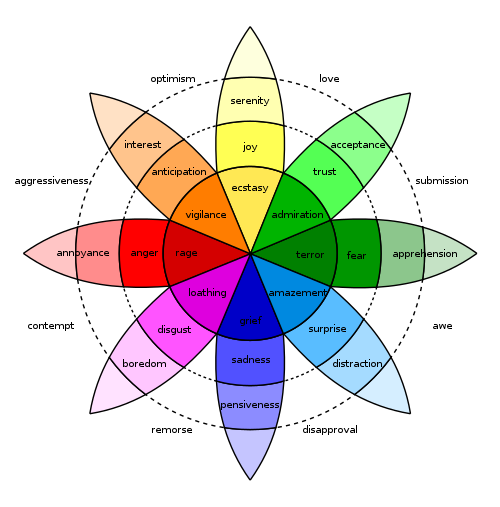Emotional intimacy
Emotional intimacy is an aspect of interpersonal relationships that varies in intensity from one relationship to another and varies from one time to another, much like physical intimacy.[1] Emotional intimacy involves a perception of closeness to another that allows sharing of personal feelings, accompanied by expectations of understanding, affirmation, and demonstration of caring.[2]
Description
Relationships (Outline) |
|---|
|
Endings |
Emotional intimacy can be expressed in verbal and non-verbal communication. The degree of comfort, effectiveness, and mutual experience of closeness might indicate emotional intimacy between individuals. Intimate communication is both expressed (e.g. talking) and implied (e.g. friends sitting close on a park bench in silence).
Emotional intimacy depends primarily on trust, as well as the nature of the relationship and the culture in which it is observed. Emotional intimacy is different from sexual intimacy. Sexual intimacy can take place with or without emotional intimacy. Sexual intimacy differs from emotional intimacy because it often does not occur within any kind of sexual context. Emotional intimacy is a psychological event that happens when trust levels and communication between two people are such that it fosters the mutual sharing of one another's deepest selves. Depending on the background and conventions of the participants, emotional intimacy might involve disclosing thoughts, feelings and emotions in order to reach an understanding, offer mutual support or build a sense of community. Or it might involve sharing a duty, without commentary.
Deep intimacy requires a high level of transparency and openness. Conversation is a key point in every emotional intimate relationship. For example, a long-distance relationship is purely based on conversation. A long-distance relationship can be stronger, in comparison to a normal one, because it forces the two partners to enhance the conversation process.[3] This involves a degree of vulnerability that can feel uncomfortable or anxiety-producing to many individuals. These feelings do, however, tend to diminish and even dissolve over time and with practice. Couples who partake in this act of emotional intimacy are able to be more comfortable with each other. They feel they can share their dreams and their positive characteristics, along with the negative characteristics that they may have. There are great moments and also tough moments that come along within a relationship. Emotional intimacy is being able to communicate your feelings to show how much you care.[4] It is important to practice emotional intimacy in relationships. A lack of emotional intimacy could be solved by taking the time to be with your partner throughout the duration of your relationships. Many specialists suggest that talking about problems as soon as they arise is wise to continue emotional intimacy. Being honest, expressing appreciation, and routinely communicating also keeps stable emotional intimacy.
Emotional Intimacy Scale
The 5-item Emotional Intimacy Scale (EIS) is a scale which enables to evaluate the emotional intimacy in a relationship. Its goal is to predict the different outcomes produced by the existence of an intimate relationship.[2]
This scale is created with a study of different items which are fundamental components of an intimate relationship. Some persons need to answer to a questionnaire. They answer to judge the degree of truth of each of these components in comparison with their actual situation. There are five of them:
- This person completely accepts me as I am
- I can openly share my deepest thoughts and feelings with this person
- This person cares deeply for me
- This person would willingly help me in any way
- My thoughts and feelings are understood and affirmed by this person
These results are putting in correlation with specific values which characterize an individual such as psychological and physical well-being, social support, and health.
The results provided by the scale prove a positive relationship between an increase of EIS and an increase for the individual of social support, self-efficiency, life satisfaction and other positive effects. It also shows the negative relation between a decrease of EIS and an increase of stress, pain, and fatigue for the individual. An intimate relationship gives a sentiment of purpose and belonging which increases the physiological and psychological well-being.
See also
References
- Dahms, Alan M. (1972). Emotional Intimacy: Overlooked Requirement for Survival. Pruett Publishers. ISBN 978-0871081841.
- Sinclair, Development and validation of the Emotional Intimacy Scale, ISSN 1061-3749, Vol 13.
- Jurkane-Hobein, Ivet (2015). "Imagining the Absent Partner: Intimacy and Imagination in Long-distance relationships". Innovative Issues and Approaches in Social Sciences. 8: 223–241. CiteSeerX 10.1.1.681.6965. doi:10.12959/issn.1855-0541.IIASS-2015-no1-art13.
- "Emotional Intimacy". Psychologytoday.com. Retrieved 19 November 2014.

